
The excitement was electric as educators helped the Wombat and Possum children into Splash Suits, raincoats, and gumboots for their adventure in the rain. The chatter was constant, children wondered what it would be like to go to our favourite places in the rain! For real life! Would there be puddles? Would there be mud?
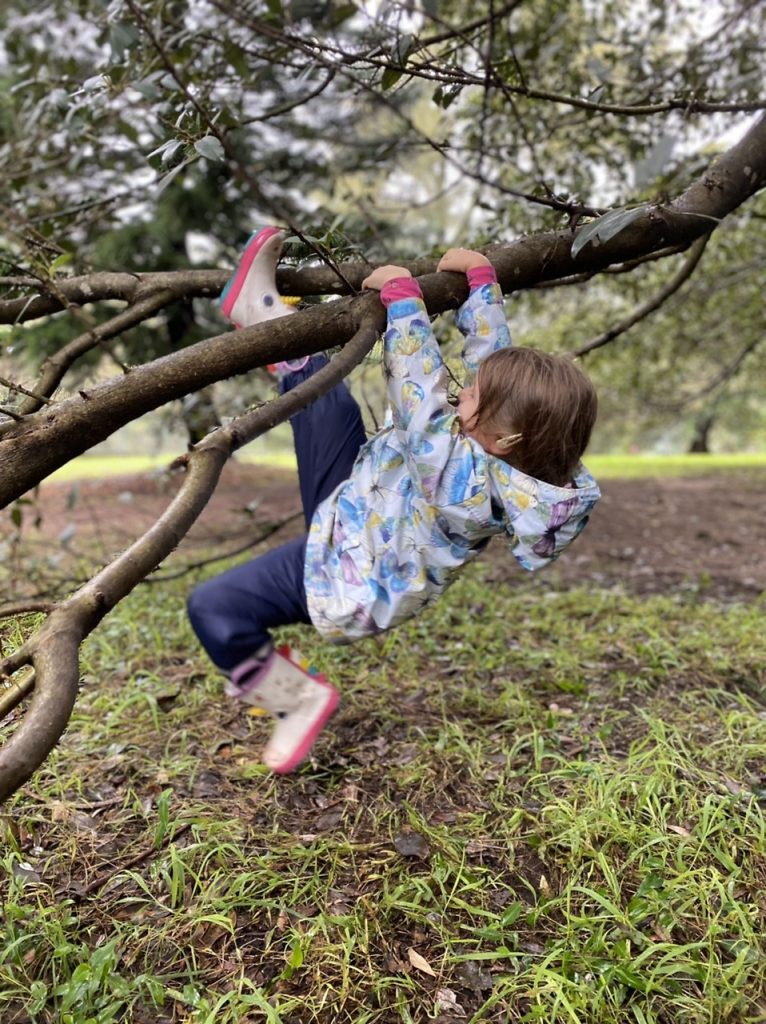
This was the beginning of a series of warm March rainy days that would give the children the opportunity to explore their favourite excursion places full of water and muddy puddles. Many of these children have been visiting these places for several years, but mostly in a time of drought, of hot and sometimes smoky days. These were children of the drought, with little familiarity with rain.

Three years ago, we purchased several Splash Suits for the service to enable more children to play in the rain and on wet ground…. then came the drought. We planned for these suits to enable our nature play program to continue in wet and cold weather. Instead, they sat in a box, barely used, and almost forgotten about.

The State of Nature Play, Outdoor Learning and Bush Kinder in Victoria, 2018 report found that the number one barrier for educators taking children outside to play in wet or cold weather was parental concerns of children getting wet and therefore sick. We want to challenge this thinking with quality nature play practice that promotes the benefits of outdoor play, supported by education, training and resources. We know that children do not get sick from rain, especially when they are dressed appropriately and change into dry clothes once outdoor play has finished. We want to live the mantra, “There’s no bad weather, just bad clothing”.
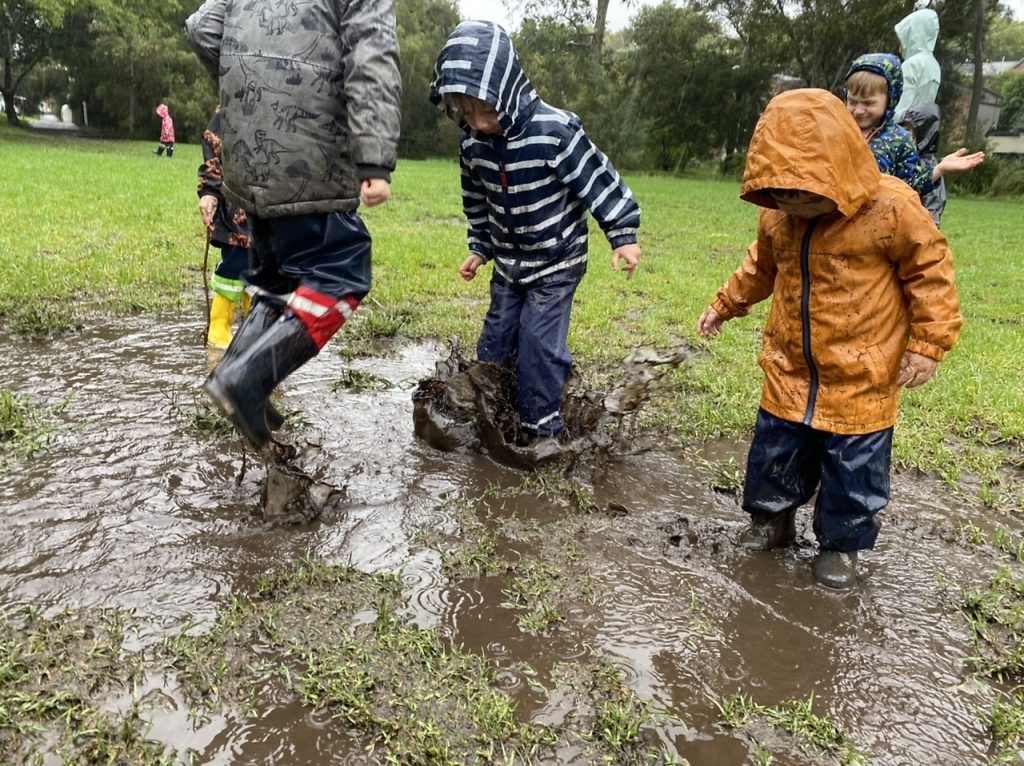
We spend time educating families to bring warm clothes for their child, and several changes. We provide wet bags for wet and muddy clothes. One of the benefits of having a well-established Nature Play program that begins with children under 2, is that our preschool families are on board with our practice and policies. We have comprehensive risk-benefit assessments that are reviewed and updated regularly and available to all families. Our documentation serves to communicate the why behind what we choose to do.
We continue our outdoor program regardless of the rain.
We educate children to make choices about playing in the rain.

We believe that to learn about a material, you need to feel it, play with it, experiment with it. To know rain, you need to feel it falling from the sky and splatting on your body. You need to walk in the puddles it makes. You need to smell the changes to the world it creates.
Our commitment to Nature Play includes experiencing all types of weather. It is underpinned by practice theory from Forest schools in Europe and North America as well as a growing body of research from an Australian perspective on nature play pedagogy. Playing in nature, even in wet weather, offers an array of benefits.
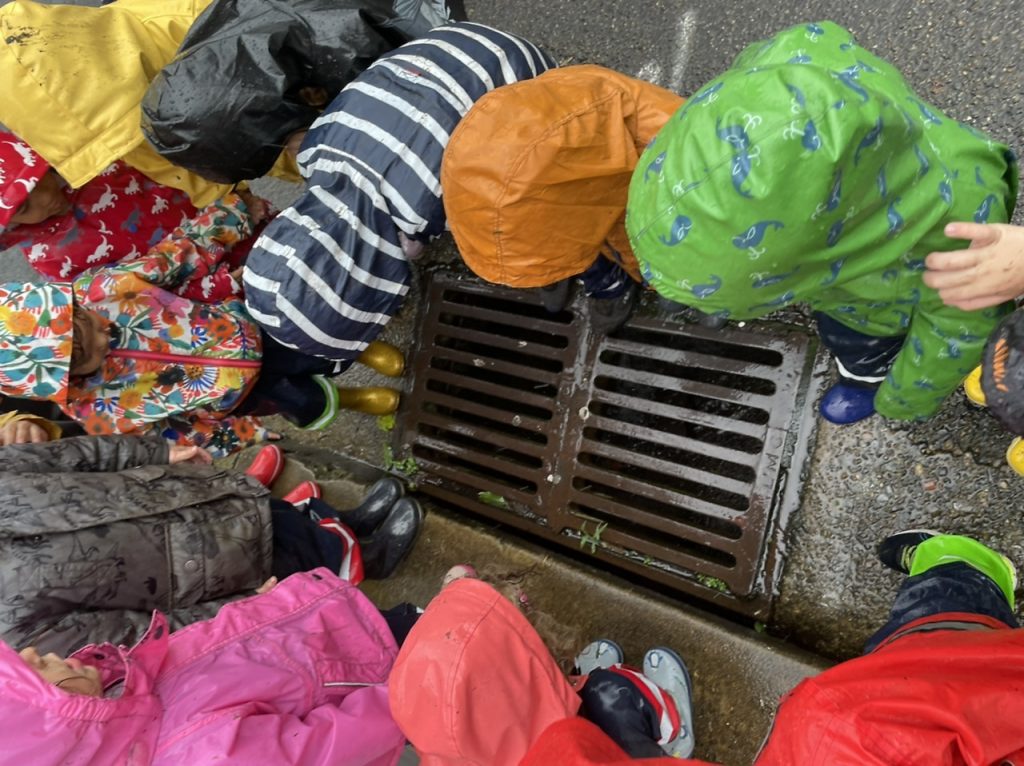
With all this in mind we have been wondering what is bad “extreme” weather? When do we have to stay indoors? Unfortunately, in recent years we have experienced extreme weather at the other end of the scale with high smoke pollution and high temperatures which we deem unsafe for excursions. These are the weather conditions that we think are unsafe for nature play excursions.
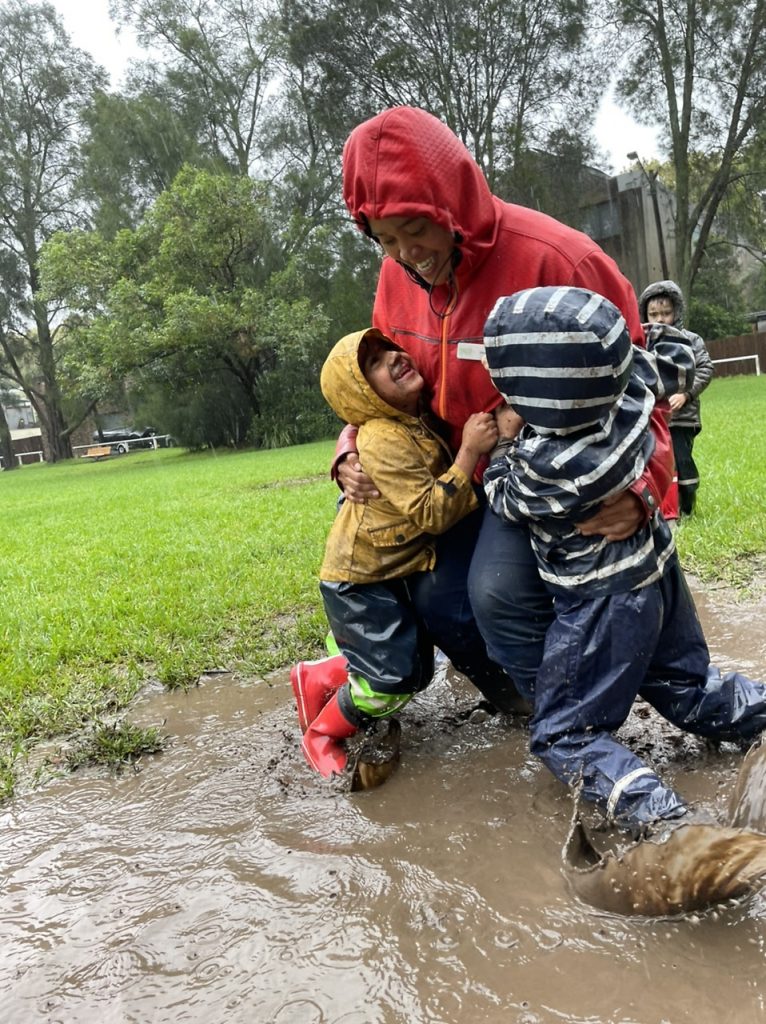
The recent rains have given us the opportunity to experience being out in the rain and to reflect on our rainy-day practices, revisit our research and knowledge around the benefits of rain play. It was not stormy with high winds or hail. Just very wet.
Family feedback has been wonderfully positive. Many acknowledging the importance of being out in the rain, experiencing place in the weather and are thankful that we include it in our program. The children went home super excited to share stories of their adventures in the rain.
It was a joy to co-wonder alongside the children as we immersed ourselves in the sensory experiences that rainy days offer.
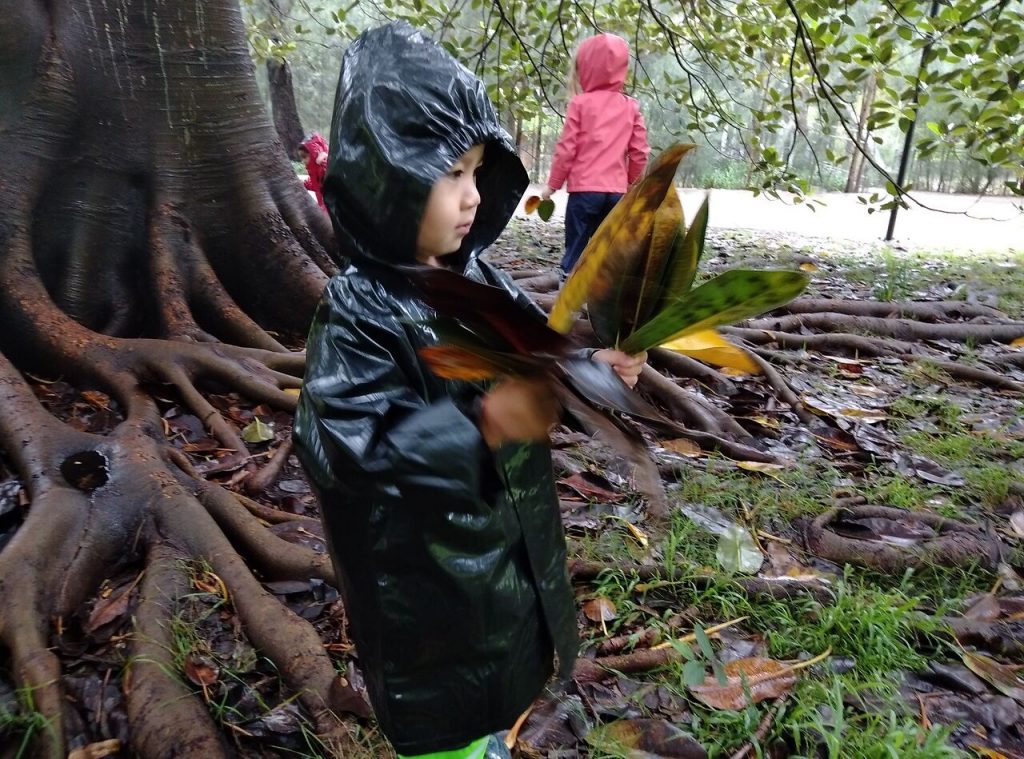
References
Kids In Nature Network (2018), The State of Nature Play, Outdoor Learning and Bush Kinder in Victoria. Summary of Key Findings and Recommendations, November 2018.